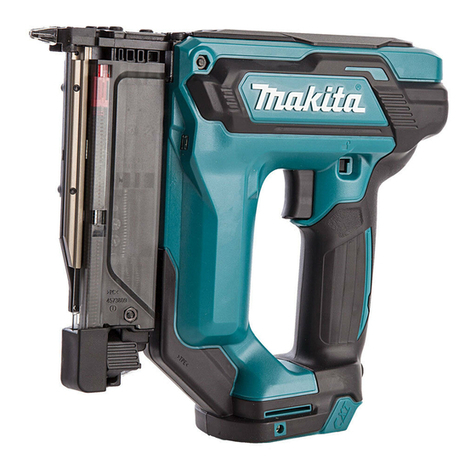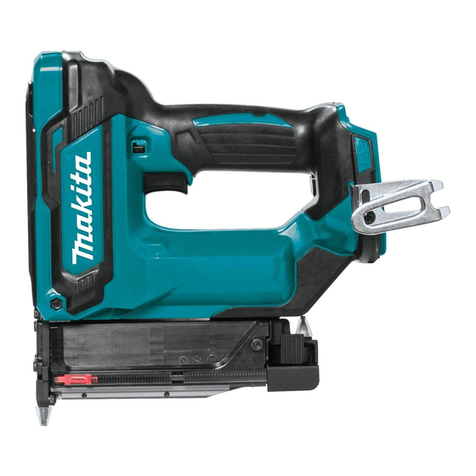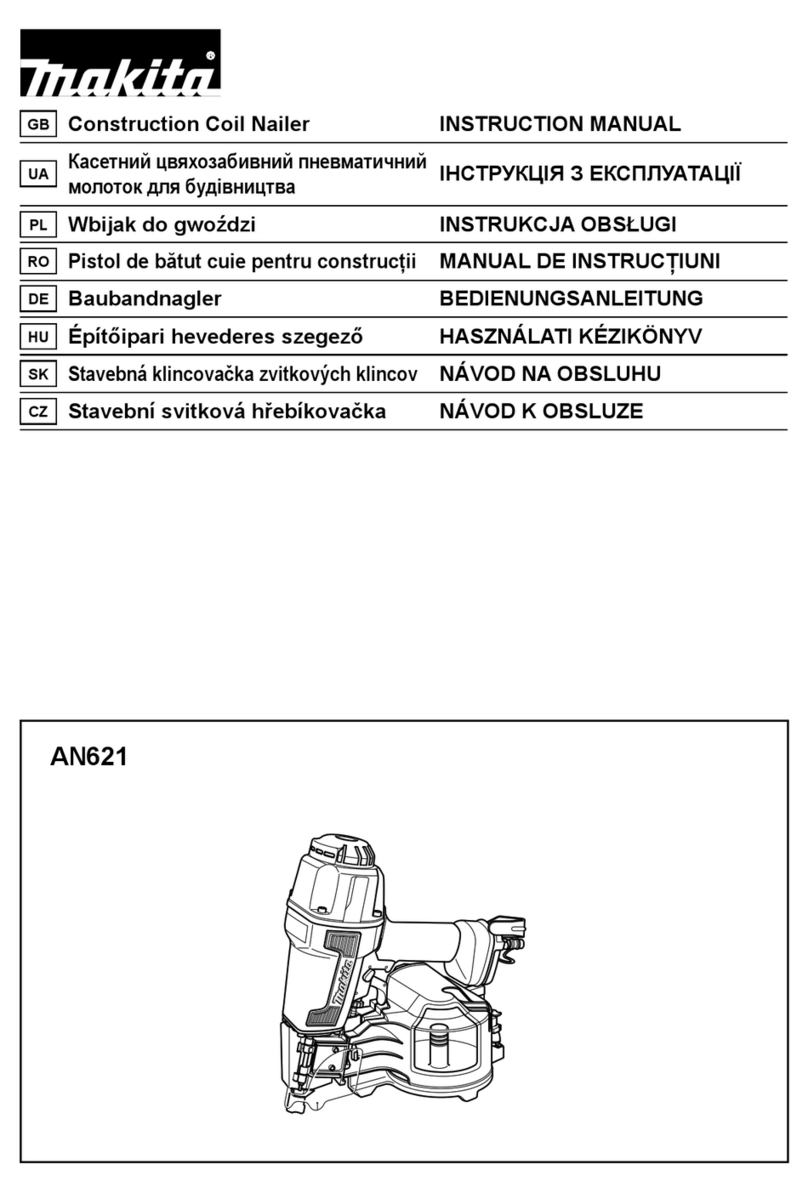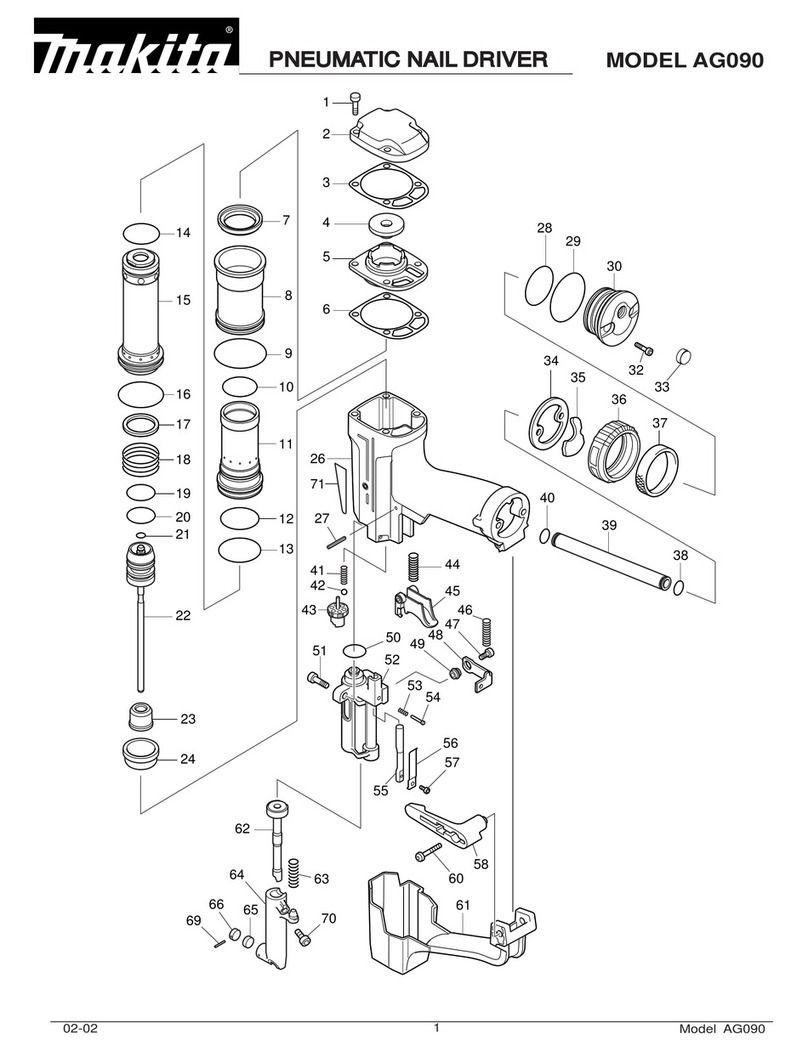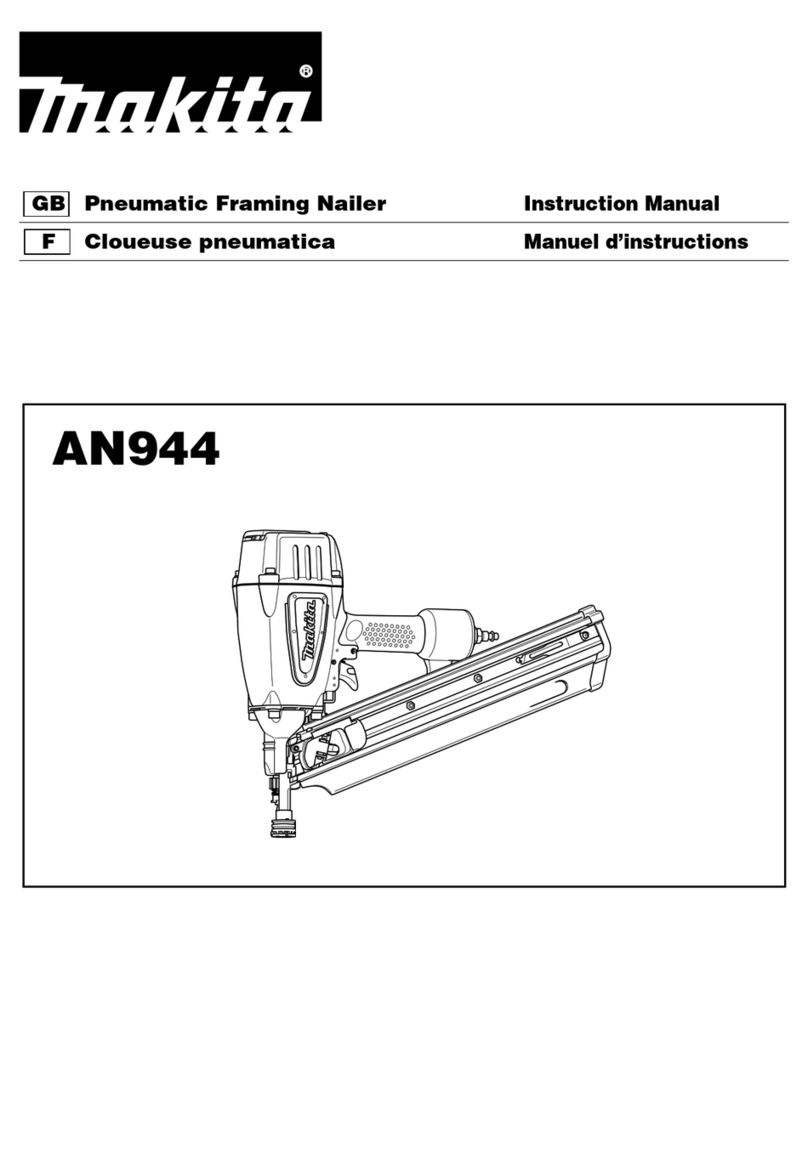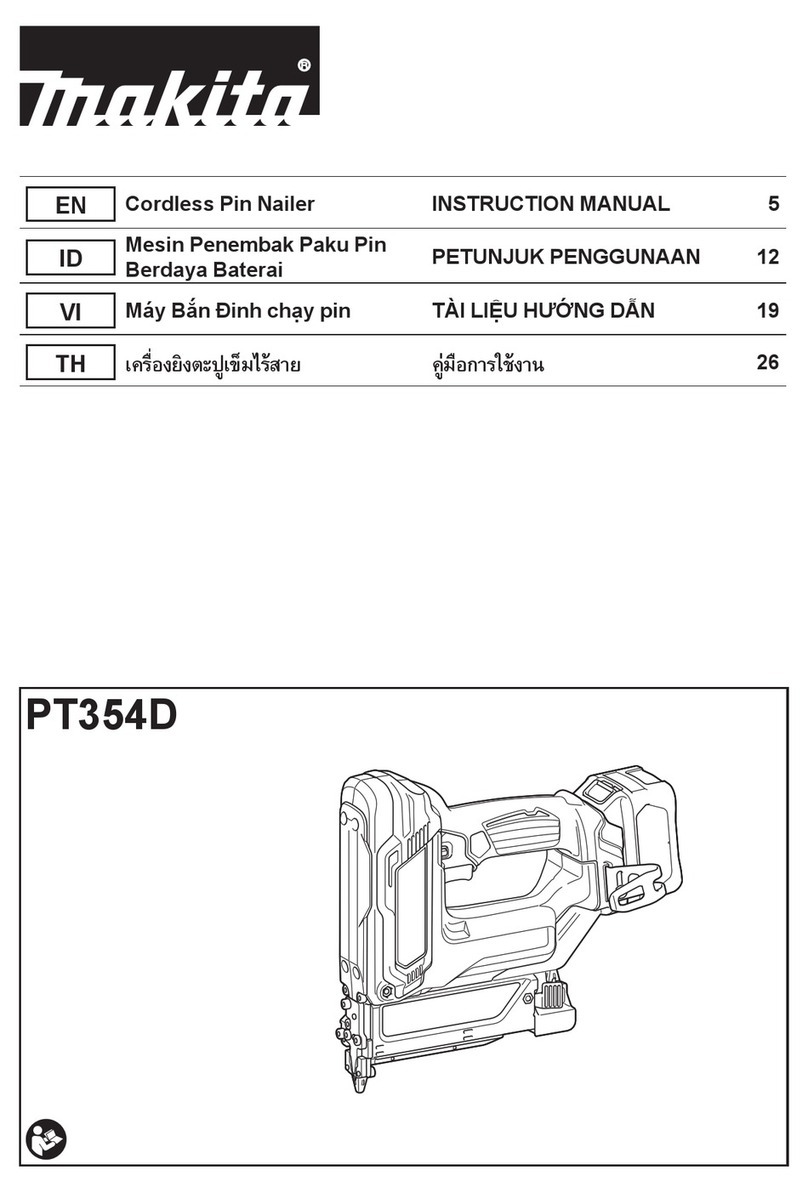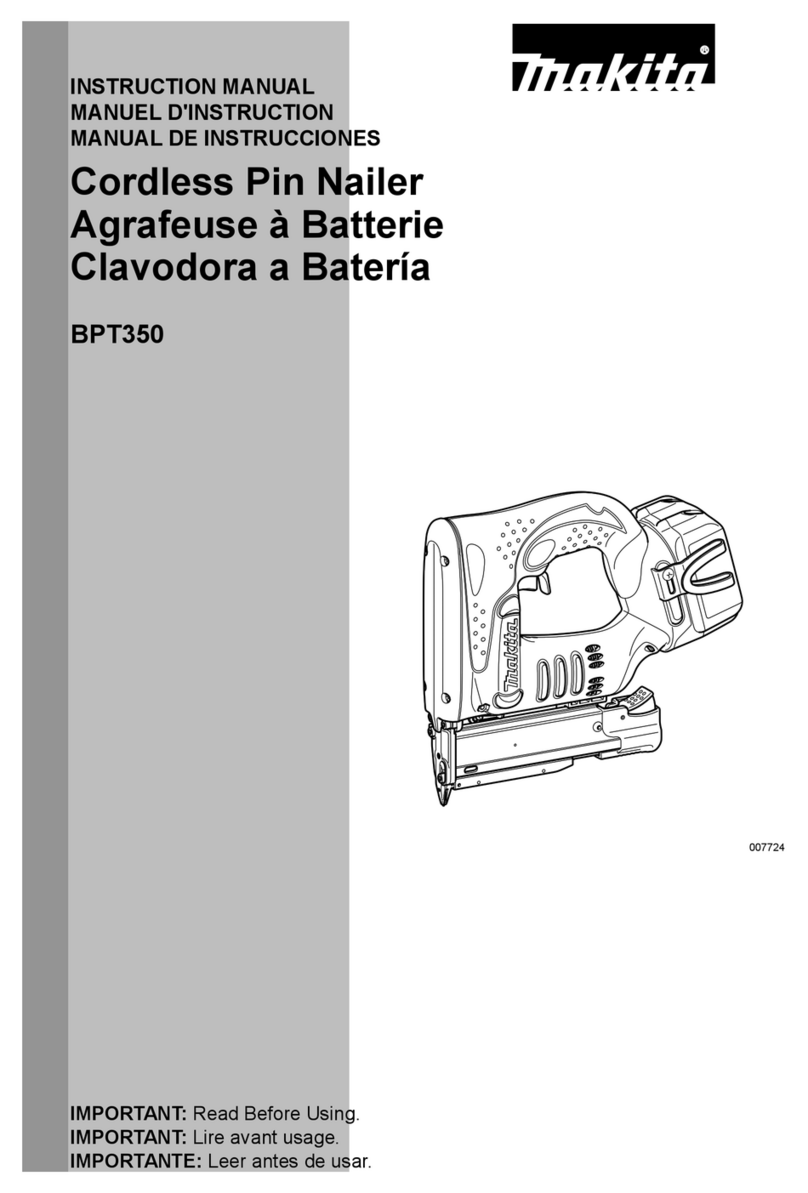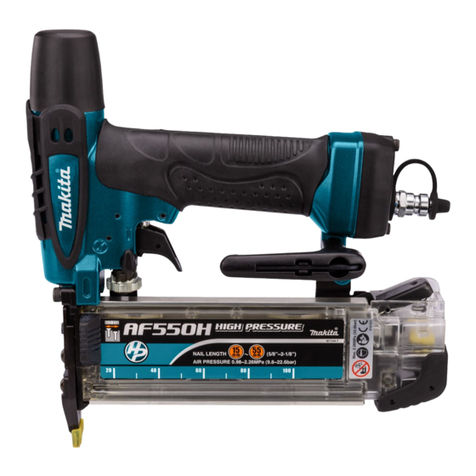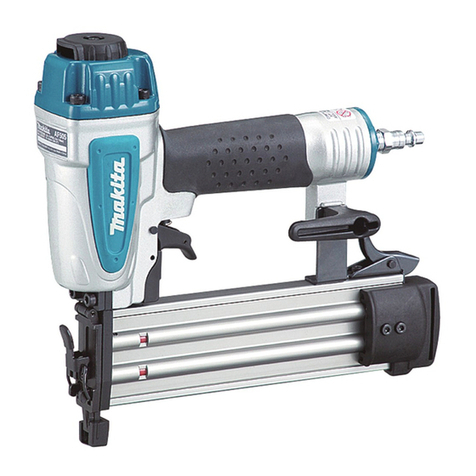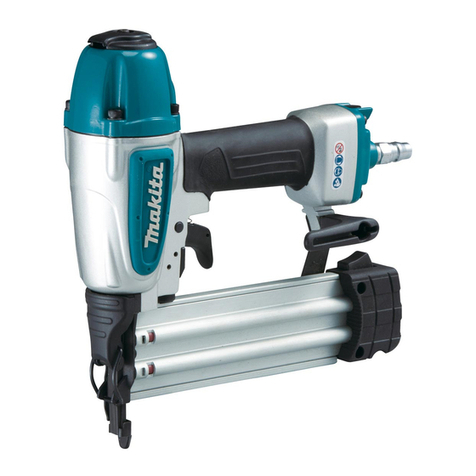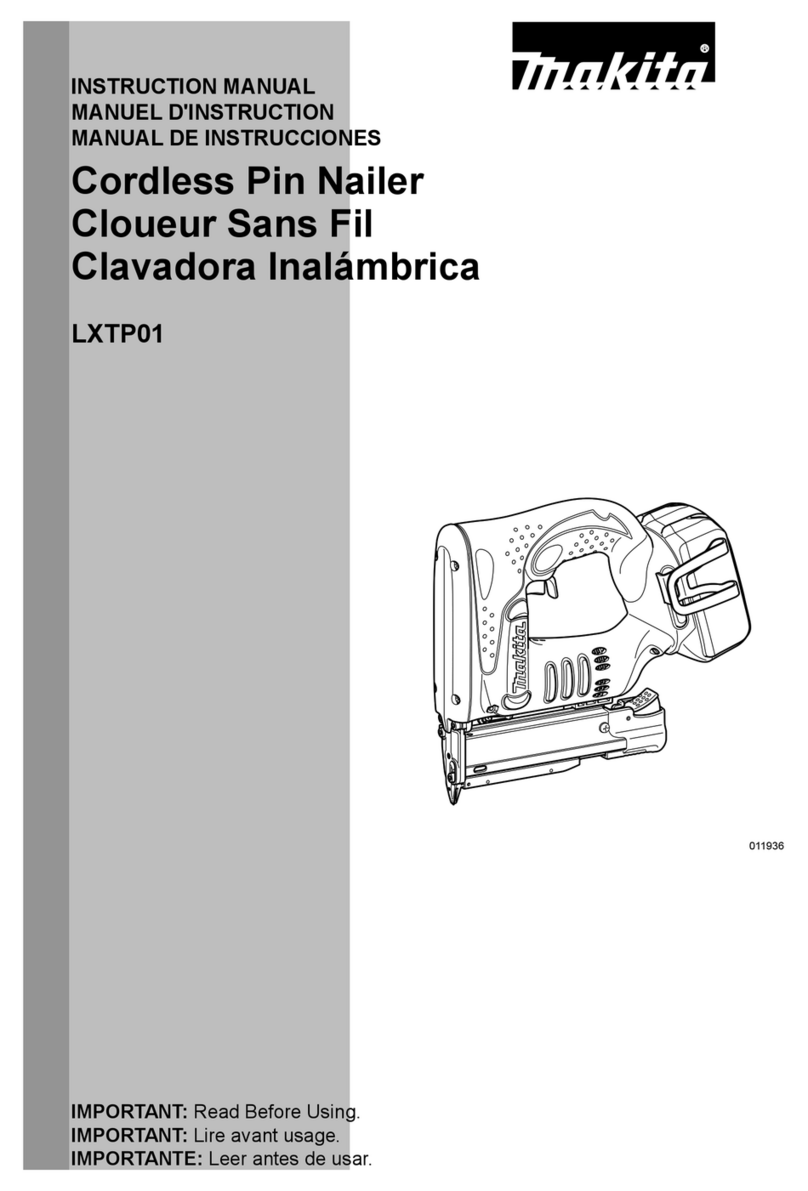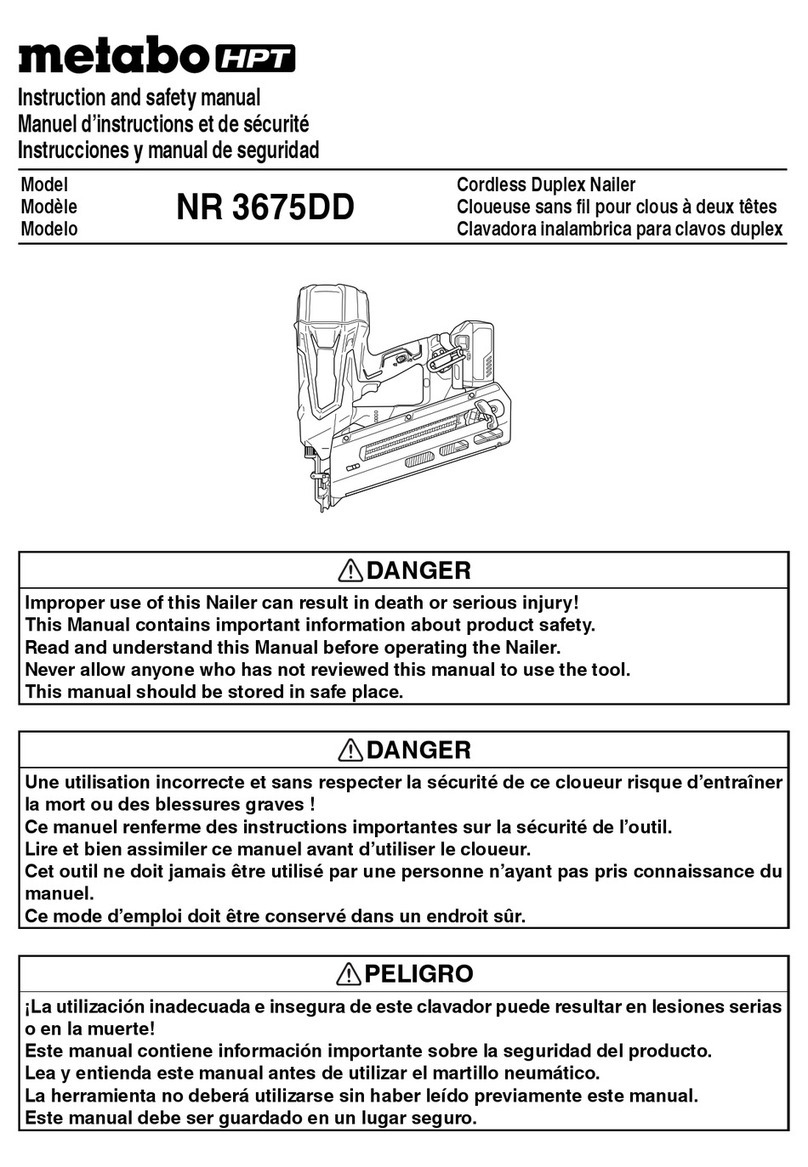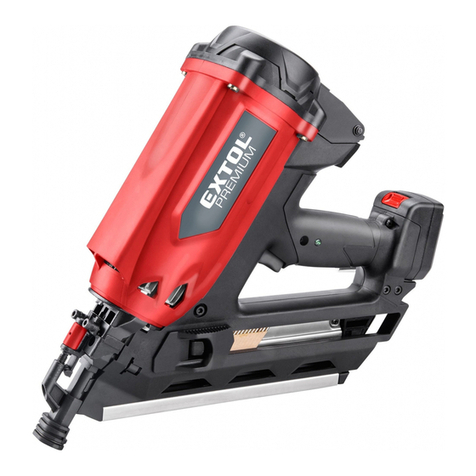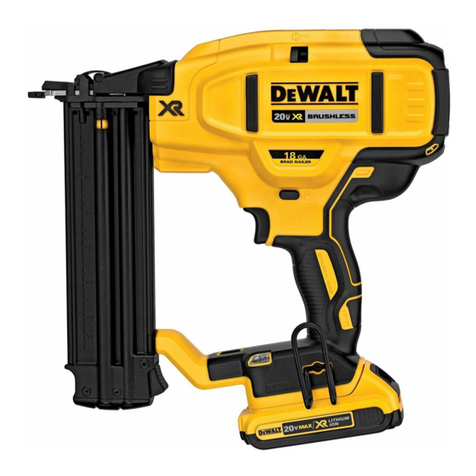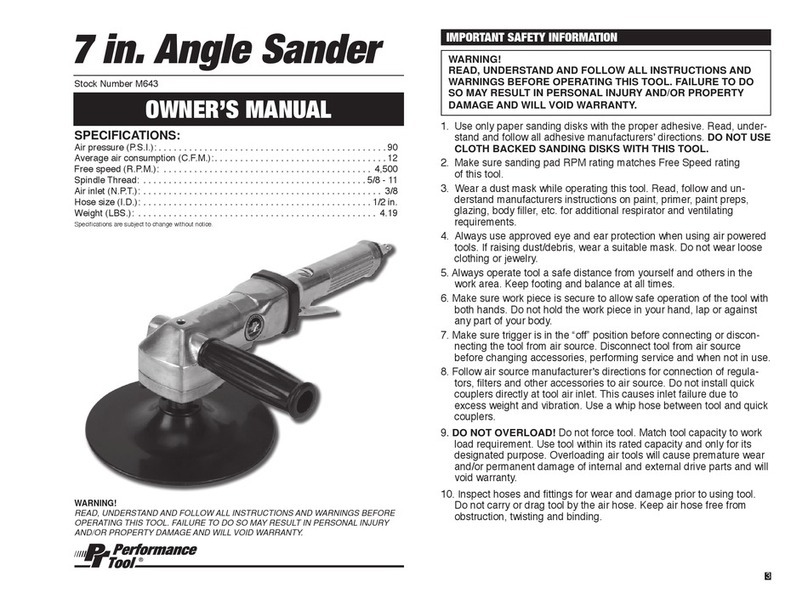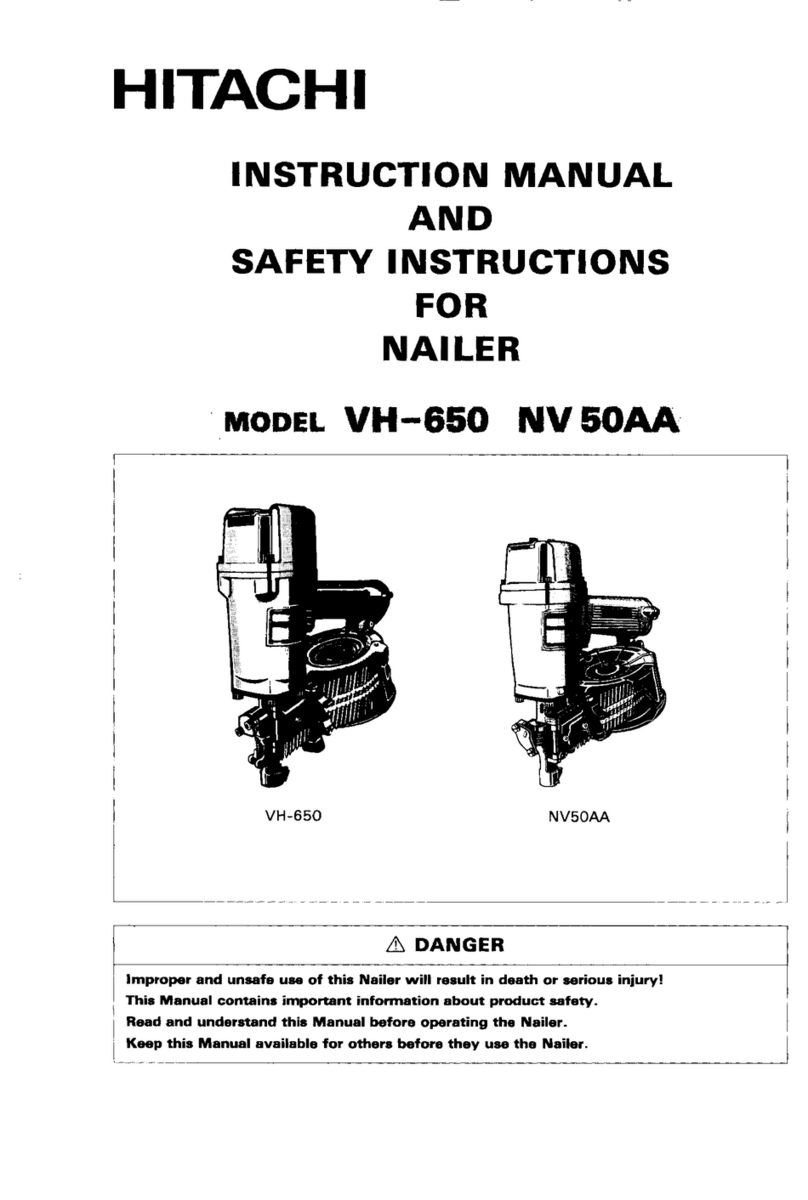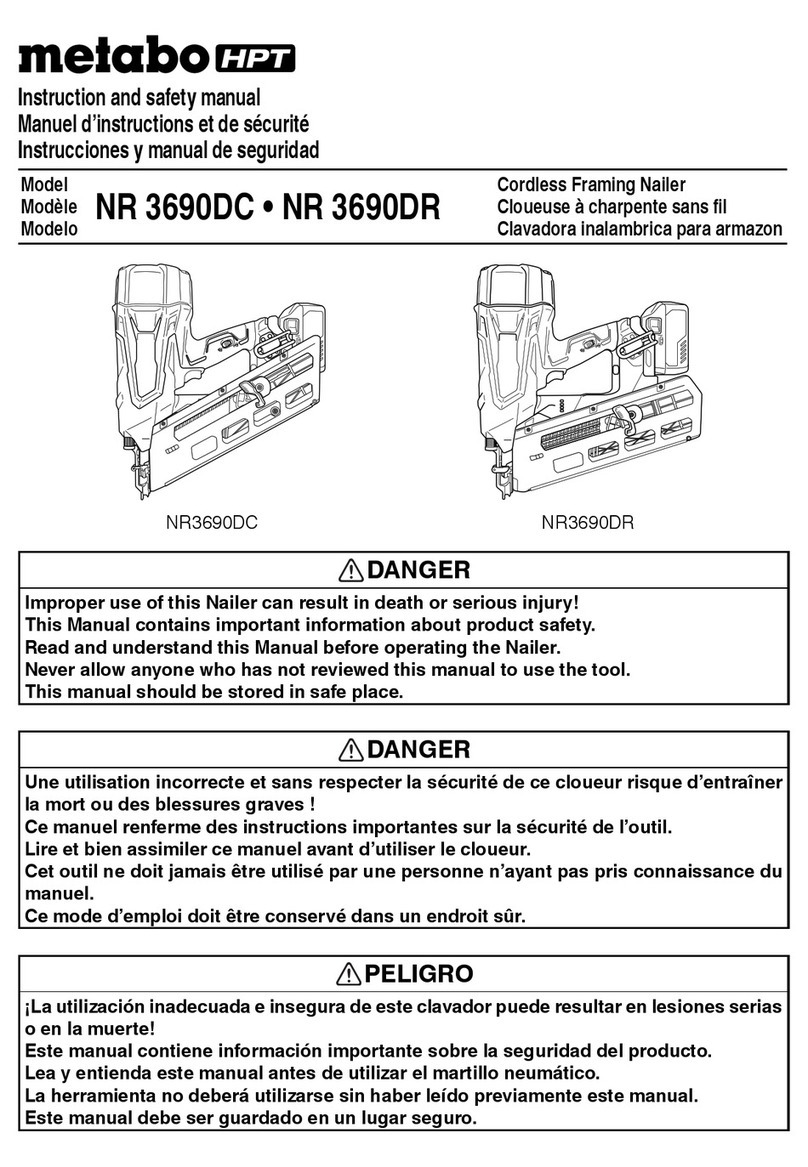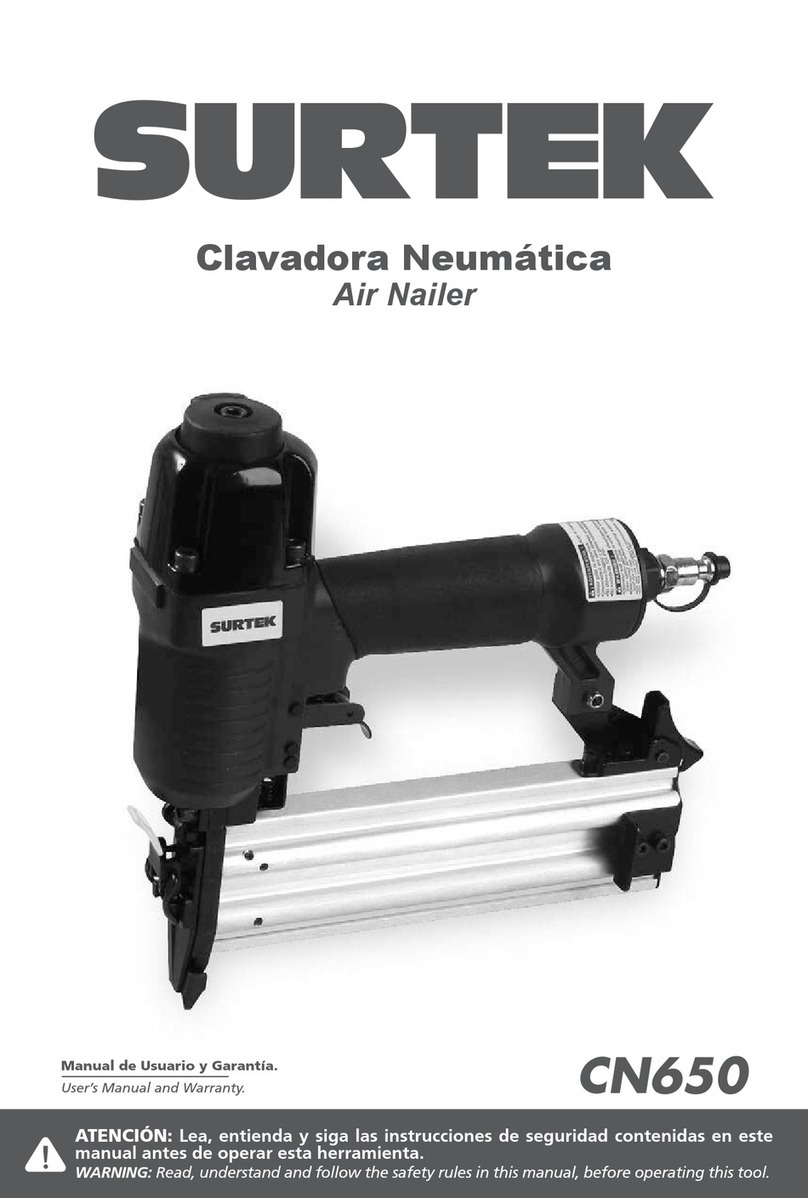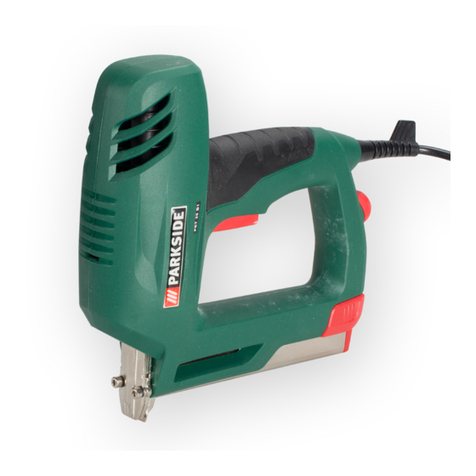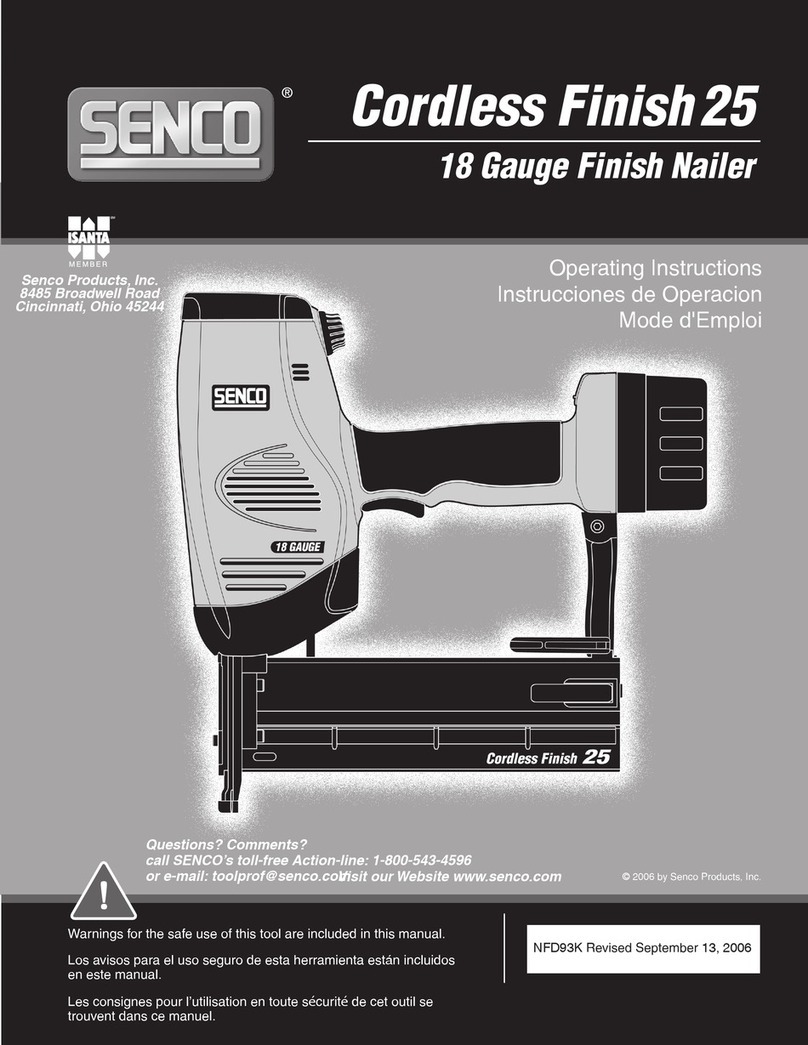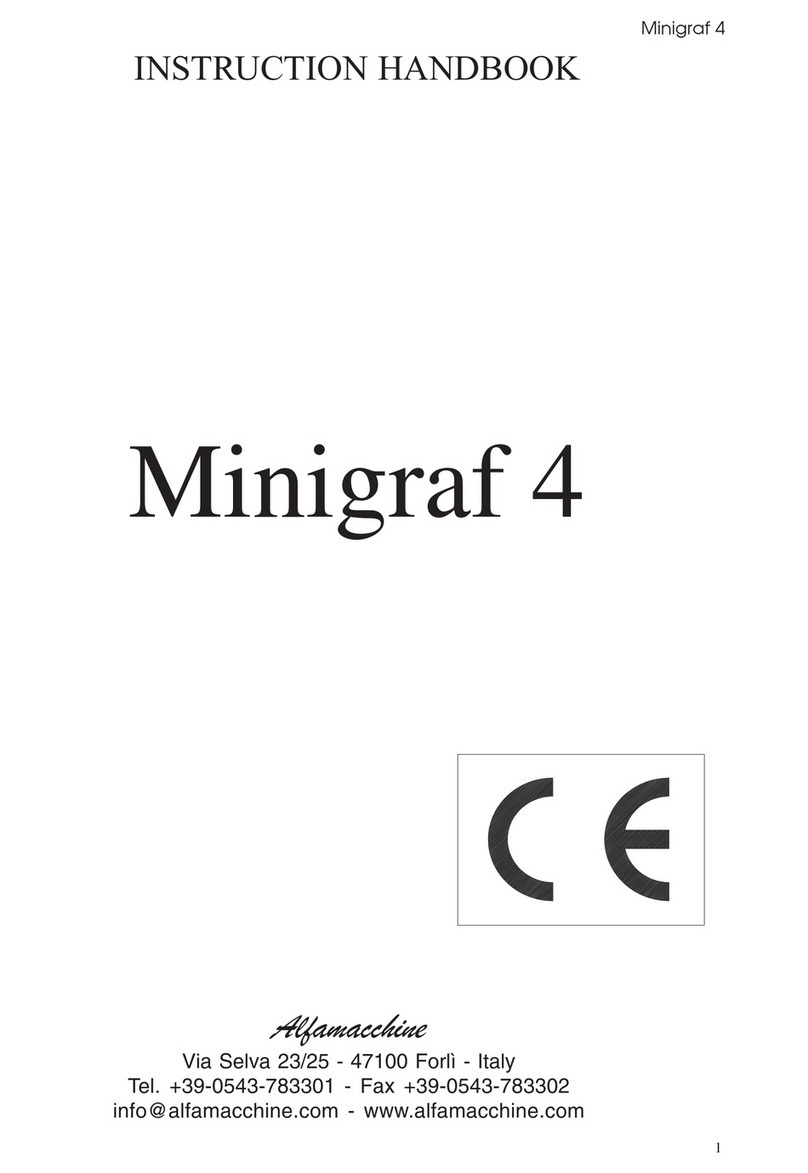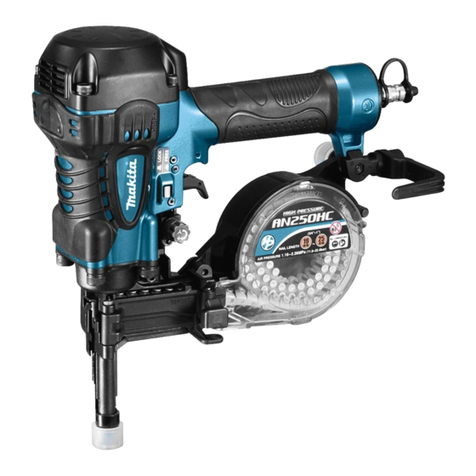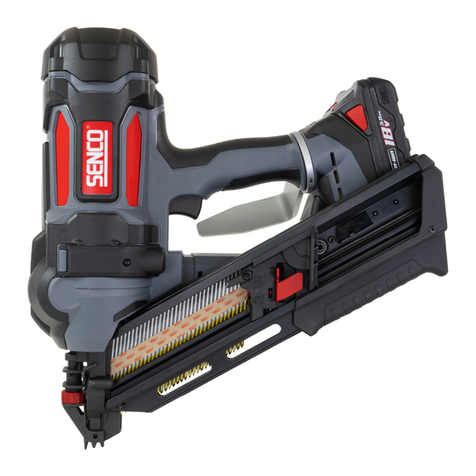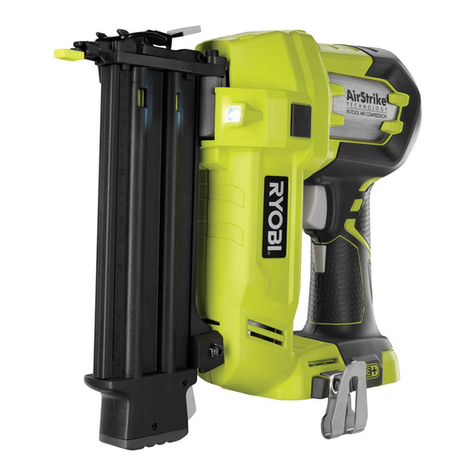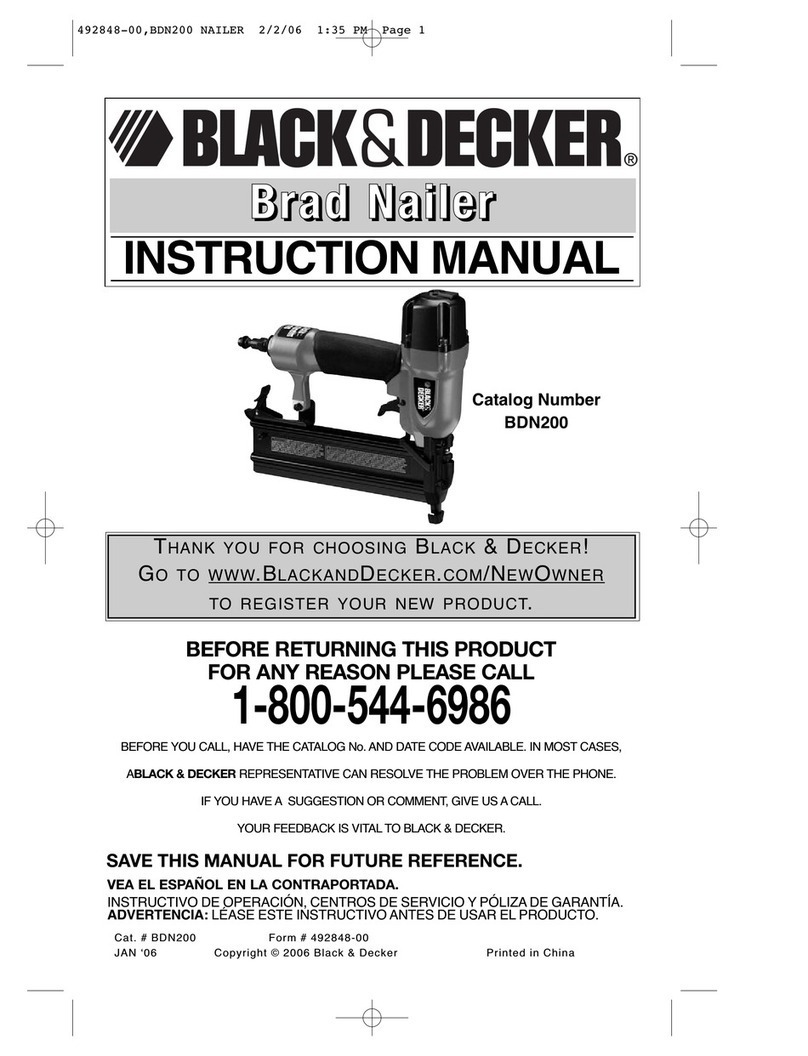4
Power tool use and care
17. Do not force the power tool. Use the correct
power tool for your application. The correct
power tool will do the job better and safer at the
rate for which it was designed.
18. Do not use the power tool if the switch does
not turn it on and off. Any power tool that cannot
be controlled with the switch is dangerous and
must be repaired.
19. Disconnect the plug from the power source
and/or the battery pack from the power tool
before making any adjustments, changing
accessories, or storing power tools. Such
preventive safety measures reduce the risk of
starting the power tool accidentally.
20. Store idle power tools out of the reach of
children and do not allow persons unfamiliar
with the power tool or these instructions to
operate the power tool. Power tools are
dangerous in the hands of untrained users.
21. Maintain power tools. Check for misalignment
or binding of moving parts, breakage of parts
and any other condition that may affect the
power tool’s operation. If damaged, have the
power tool repaired before use. Many accidents
are caused by poorly maintained power tools.
22. Keep cutting tools sharp and clean. Properly
maintained cutting tools with sharp cutting edges
are less likely to bind and are easier to control.
23. Use the power tool, accessories and tool bits
etc. in accordance with these instructions,
taking into account the working conditions
and the work to be performed. Use of the power
tool for operations different from those intended
could result in a hazardous situation.
Battery tool use and care
24. Recharge only with the charger specified by
the manufacturer. A charger that is suitable for
one type of battery pack may create a risk of fire
when used with another battery pack.
25. Use power tools only with specifically
designated battery packs. Use of any other
battery packs may create a risk of injury and fire.
26. When battery pack is not in use, keep it away
from other metal objects, like paper clips,
coins, keys, nails, screws or other small metal
objects, that can make a connection from one
terminal to another. Shorting the battery
terminals together may cause burns or a fire.
27. Under abusive conditions, liquid may be
ejected from the battery; avoid contact. If
contact accidentally occurs, flush with water.
If liquid contacts eyes, additionally seek
medical help. Liquid ejected from the battery may
cause irritation or burns.
Service
28. Have your power tool serviced by a qualified
repair person using only identical replacement
parts. This will ensure that the safety of the power
tool is maintained.
29. Follow instruction for lubricating and
changing accessories.
30. Keep handles dry, clean and free from oil and
grease.
GEB090-1
CORDLESS NAILER SAFETY
WARNINGS
1. Always assume that the tool contains
fasteners. Careless handling of the nailer can
result in unexpected firing of fasteners and
personal injury.
2. Do not point the tool towards yourself or
anyone nearby. Unexpected triggering will
discharge the fastener causing an injury.
3. Do not actuate the tool unless the tool is
placed firmly against the workpiece. If the tool
is not in contact with the workpiece, the fastener
may be deflected away from your target.
4. Disconnect the tool from the power source
when the fastener jams in the tool. While
removing a jammed fastener, the nailer may be
accidentally activated if it is plugged in.
5. Use caution while removing a jammed fastener.
The mechanism may be under compression and
the fastener may be forcefully discharged while
attempting to free a jammed condition.
6. Do not use this nailer for fastening electrical
cables. It is not designed for electric cable
installation and may damage the insulation of
electric cables thereby causing electric shock or
fire hazards.
7. Always wear safety goggles or safety glasses
with side shield, and a full face shield when
needed.
8. Keep hands and feet away from the ejection
port area.
9. Always remove the battery cartridge before
loading the fasteners, adjustment, inspection,
maintenance or after operation is over.
10. Make sure no one is nearby before operation.
Never attempt to drive fasteners from both the
inside and outside of wall at the same time.
Fasteners may rip through and/or fly off,
presenting a grave danger.
11. Watch your footing and maintain your balance
with the tool. Make sure there is no one below
when working in high locations.
12. Check walls, ceilings, floors, roofing and the
like carefully to avoid possible electrical

